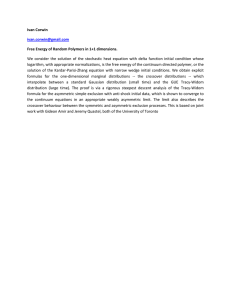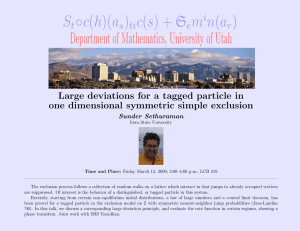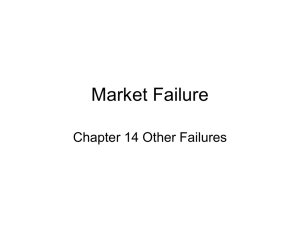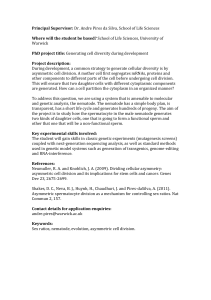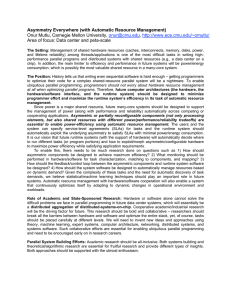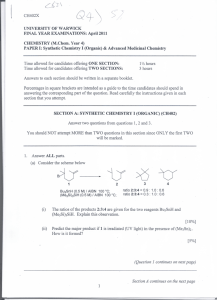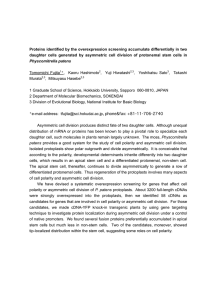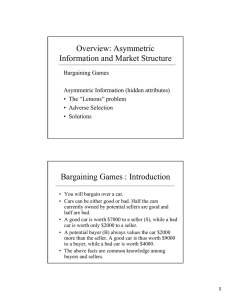Speeds in (partially) asymmetric processes Omer Angel UBC
advertisement
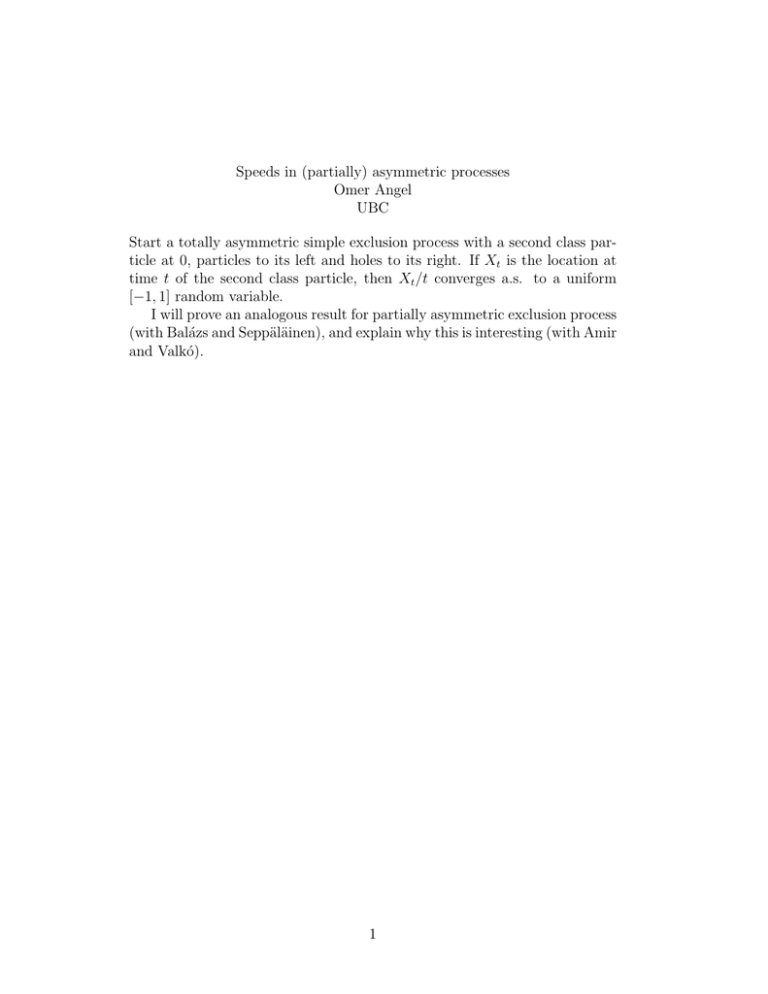
Speeds in (partially) asymmetric processes Omer Angel UBC Start a totally asymmetric simple exclusion process with a second class particle at 0, particles to its left and holes to its right. If Xt is the location at time t of the second class particle, then Xt /t converges a.s. to a uniform [−1, 1] random variable. I will prove an analogous result for partially asymmetric exclusion process (with Balázs and Seppäläinen), and explain why this is interesting (with Amir and Valkó). 1
